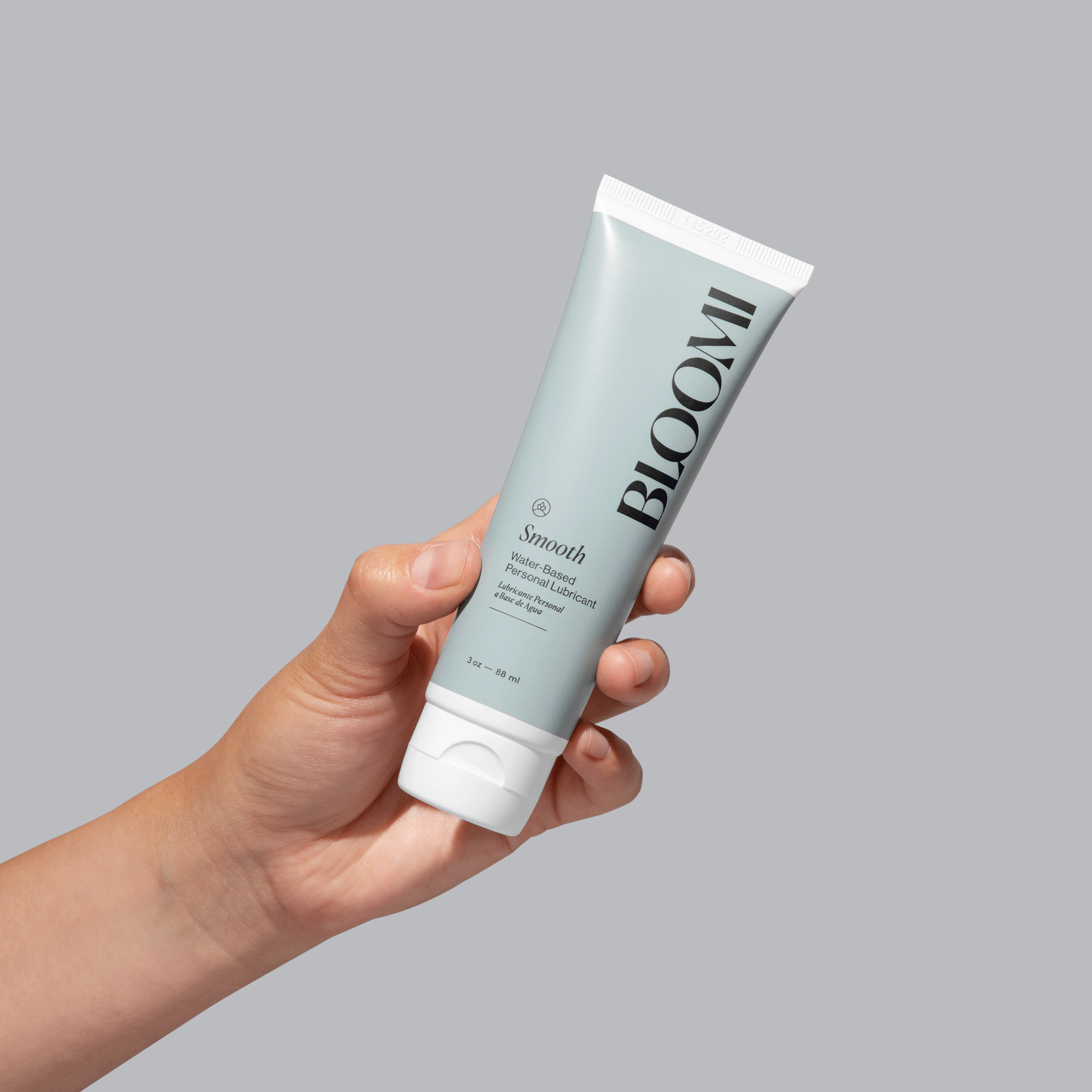Why penetration may be painful and what to do about it
If you've experienced pain during penetration, you're not alone.
According to the American College of Obstetricians and Gynecologists (ACOG), about 75% of people with vaginas experience pain during penetrative sex at some point. This can be caused by a myriad of reasons: dryness, vaginal pain caused by conditions like endometriosis or interstitial cystitis, among others, menopausal changes, and more. We're diving into what can cause painful penetrative sex and ways to help (or even prevent!) it.
Vaginal dryness
Vaginal dryness is a common problem that can play a huge role in painful intercourse. Dryness itself is a symptom, and it can be a result of post or peri-menopausal changes or decreased desire and arousal, or both.
Menopausal changes
Going through menopause can complicate your sex life. The loss of estrogen that comes along with menopause can cause vaginal tissue to become thin and, well, dry. The result? Painful sex.
If adding in a lubricant helps, and you’ve gone through menopause, then it’s a safe bet that this loss of estrogen may be to blame. If an over-the-counter lubricant isn’t cutting it, pay your healthcare provider a visit. We’ve got other (prescription-required) tricks up our sleeves.
Decreased sex drive
While many of us associate menopause with a decrease in sex drive, too, this isn’t necessarily the case; a decreased libido can affect people at any age, and for various reasons.
ACOG reports that certain medications (antidepressants, blood pressure, pain, and migraine medications, and even some forms of birth control) can lead to a decreased desire. Physical health, chronic disease, body image, mindfulness and communication with your partner all play a role in the overall picture.
What you can do: use lubricants during intercourse. Keep in mind that if you also use condoms, you’ll want to pick out a lubricant that is water-based. We recommend Smooth, Bloomi's clean, water-based lube that's formulated for penile and/or vaginal application and is intended to moisturize and lubricate to enhance the ease and comfort of intimate activity.
Additionally, make sure that there is adequate foreplay prior to intercourse. Also, remember that healthy, regular communication with your partner on what is desired and what causes discomfort can be hugely beneficial. Couples-based sex therapy may also be a useful tool.
Smooth Water-Based Personal Lubricant
Formulated for penile and/or vaginal application, intended to moisturize, lubricate, and enhance the ease and comfort of intimate activity.
Current vaginal infection
Active vaginal infections, such as yeast infections, bacterial vaginosis or some STDs, can cause vaginal discomfort during intercourse. If painful intercourse is relatively new, pay your OB/GYN a visit to get things checked out. Some vaginal infections may also be accompanied by other symptoms, such as an abnormal vaginal discharge, odor or new vulvar lesions.
Once these infections are treated (assuming they’re the culprit), discomfort with intercourse should improve. What you can do: make an appointment to see your healthcare provider for a pelvic exam and appropriate testing.
Chronic vaginal pain
If you’ve dealt with chronic vaginal pain with intercourse not related to either of the above, you may be experiencing something called vulvodynia. According to ACOG, vulvodynia is defined as pain affecting the vulva that “lasts for 3 months or longer and is not caused by an infection, skin disorder, or other medical condition.”
Other medical conditions or causes of vaginal pain must be ruled out before a diagnosis can be made, so it’s important to see your provider for an appropriate evaluation. While it’s not entirely sure what causes vulvodynia, there are various therapies that may help manage the symptoms.
What you can do: work closely with your gynecologist to come up with a treatment plan that’s personalized. Make sure to avoid irritants (scented soaps, laundry detergents, and bubble baths), wear cotton underwear and use a mild lubricant with intercourse. Your gynecologist may recommend starting or stopping certain medications, or even pelvic floor physical therapy.
Persistent pelvic pain with intercourse
Persistent pelvic pain, especially deep pelvic pain, with intercourse may indicate a bigger problem. As with all of these, it’s important to see your healthcare provider for a proper evaluation. An exam will be performed, as well as possible lab tests, to rule out any other causes. A pelvic ultrasound, and sometimes surgery, may be recommended depending on the severity of your symptoms.
According to ACOG, common causes of chronic pelvic pain with intercourse include endometriosis, scar tissue, ovarian cysts, pelvic floor dysfunction, bowel or bladder problems, pelvic inflammatory disease and uterine fibroids. As with many of these conditions, your provider will help rule in (and rule out) certain possible causes of pain. In working with your provider, you can come up with a treatment plan that suits you best.
Painful intercourse is a common problem, and can happen to anyone, at any age. It’s certainly not something to be ashamed or embarrassed about. In fact, it’s reported to affect 3 out of 4 people with vaginas at some point or another during the course of their lives (ACOG, 2017).
Being open about difficulty with sex has long been taboo, but that doesn’t have to be the case. Speak up if your experience is less-than-ideal, because it doesn’t have to be.


